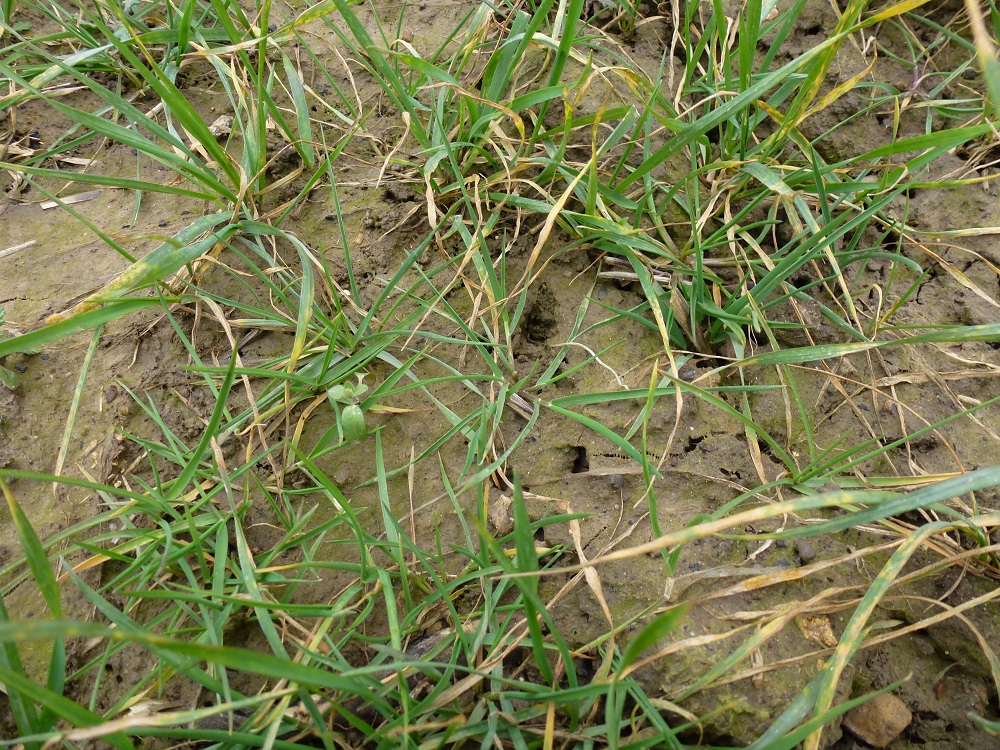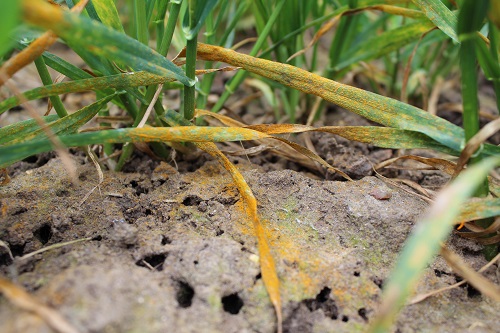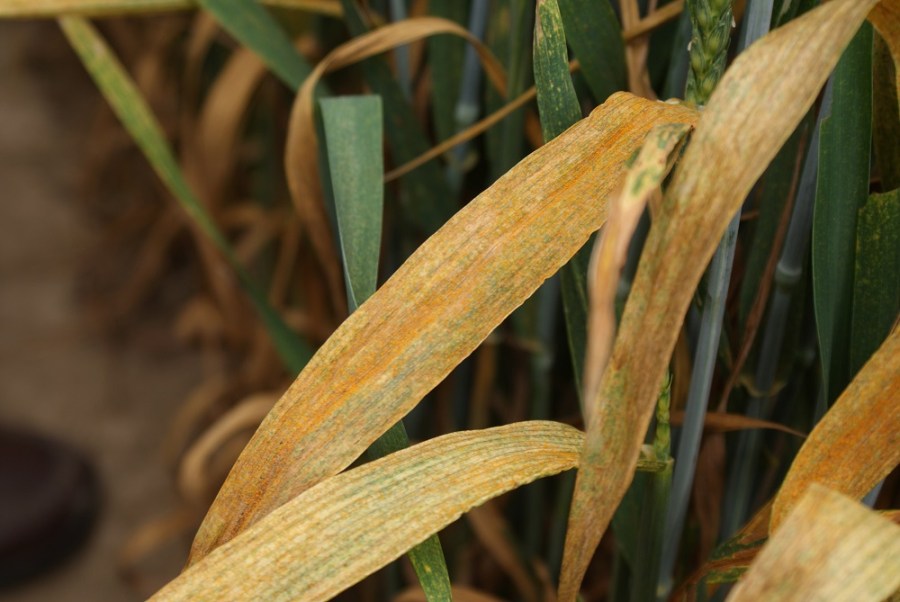Yellow rust re-wrote the resistance ratings last season, proving an unexpected headache in several varieties. CPM seeks expert advice on an evolving problem.
The main challenge for growers is that the yellow rust population is still changing.
By Lucy de la Pasture
Almost every Reflection grower had a wake-up call last season when yellow rust was widely reported to be affecting the variety at higher levels than was expected by its RL rating for resistance to the disease. And they weren’t alone – yellow rust was on the rampage and appeared to be showing little respect for the resistance genes breeders had designated in varieties to hold it in check.
Where timely control measures were applied, yellow rust didn’t prove to be disastrous, but it brought home the point that there’s no substitute for keeping a close eye on crops in the field. The days have gone where yellow rust resistance ratings can provide a sense of security –the timeliness buffer that resistant varieties provide may not be there anymore.
NIAB technical director, Bill Clark, shares his expertise on this fast-evolving disease and how to deal with it.
What is yellow rust?
Yellow rust is caused by the fungus Puccinia striiformis, which has distinct forms that are specific to different crops. P. striiformis f.sp.tritici can attack wheat and triticale and P. striiformis f.sp.hordei can only attack barley. Within the forms of P. striiformis there are races which can only attack particular varieties.
- striiformis requires living green plant material in order to survive. The fungus survives the winter as dormant mycelium or active sporulating lesions on volunteers or early autumn-sown crops. Yellow rust within plant tissue can survive very low temperatures so once infected the fungus will usually survive the coldest of UK winters. Only if the wheat leaves are killed by frost will the yellow rust fungus within the plant tissues die.
In the spring, particularly in cool moist weather, the fungus starts to grow and produces active sporulating lesions. Temperatures of 10-15°C and a relative humidity of 100% are optimal for spore germination, penetration and production of new, wind-dispersed spores. The fungus is inhibited by temperatures over 20°C so high temperatures in the summer can stop an epidemic. The complete cycle from infection to the production of new spores can take as little as 10 days during ideal conditions. The disease cycle may therefore be repeated many times in one season.

The majority of current varieties are susceptible to yellow rust at an early stage of growth.
How has the disease developed?
During late summer, the dark teliospores may be produced. These can germinate to produce yet another spore type, the basidiospore which can infect wild Berberis species – which acts as the alternate host (as with black stem rust). This sexual stage doesn’t happen in the UK – but it does in some parts of the world – parts of China and the Himalayas where wild Berberis and wheat grow side by side. It is thought that the new Warrior population that came into Europe in 2011 originated from the Himalayan region.
The recent epidemics, since 2011, have been dominated by these new Warrior races – originally thought to be a single new ‘alien’ race from outside Europe, we now know that this is a population of new races that have now almost completely replaced the old European races. These races are dominating European yellow rust populations.
How does this affect varieties?
The introduction of several new races from outside Europe has caused some rapid changes in the degree of resistance shown by current varieties, so has been challenging for breeders and some varieties have suffered a spectacular breakdown in resistance.
The UKCPVS, managed by NIAB and funded by AHDB Cereals and Oilseeds and Defra, receives infected cereal leaf samples from agronomists, trials officers and researchers. From these samples, pathogen isolates are selected and tested to check their virulence

In the spring, particularly in cool moist weather, the fungus starts to grow and produces active sporulating lesions.
against wheat and barley varieties. The testing can detect new races of cereal pathogens capable of causing disease on previously resistant cereal varieties.
Last year, UKCPVS revealed that a group of yellow rust isolates, sampled in 2015, appeared to be similar to the old UK Solstice race. Further testing showed these isolates had a distinct pattern of virulence on a wider set of varieties and were genetically unrelated to the old race, indicating a new race is present – provisionally named Invicta. The UKCPVS also confirmed the presence of the Kranich race in the UK yellow rust population. It’s possible that Kranich, Invicta, or even an as-yet undetected race, could have been behind the unexpected levels of yellow rust seen in 2016.
How does chemistry help?
Luckily, we have many fungicide groups that are active against yellow rust and there are no signs of resistance issues in the yellow rust population. Several groups of fungicides are very active: the triazoles, SDHIs and strobilurin fungicides are all very effective. In most situations, a normal fungicide programme of triazoles and SDHIs would effectively control yellow rust.
In recent years, we’ve had mild winters which has led to some crops showing active yellow rust pre-Christmas and 2016 was no exception. In a few of these cases it can be necessary to treat specifically for yellow rust, but in most situations, it can wait until the spring when a straight triazole is sufficient to control the early epidemic.
What happened in 2016?
The weather patterns in 2016 were probably best described as ‘atypical’. There were severe yellow rust epidemics throughout the UK, with outbreaks on varieties that had previously been regarded as resistant. This was partly related to the new races of yellow rust that had previously entered the UK back in 2011. Since then the different Warrior races have been competing with one another for dominance, with multiple races present on the same leaf becoming more common.
Because changes in yellow rust populations usually occur relatively slowly, wheat yellow rust ratings are normally calculated from a three-year dataset. As 2016 assessment data showed high and unexpected levels of yellow rust for several varieties, the dataset has been limited to a single year for disease rating calculations in the 2017/18 RL. Because of the increasing complexity of UK yellow rust pathogen populations, basing the yellow rust disease ratings solely on 2016 data is considered the best way to reflect varietal performance in the field for 2017.
What’s the best approach this spring?
There were reports of yellow rust in crops pre-Christmas 2016 and these will require careful monitoring through the winter months. The majority of current varieties are susceptible to yellow rust at this early stage of growth – so it’s not unusual to see rust early in the growth of many crops.
Normally no specific action will be needed before the spring – except perhaps in some very susceptible varieties (e.g. KWS Kielder, Reflection, Solstice). These could require early intervention in the spring long before the T0 or T1 spray timings.
Triazoles are very effective against yellow rust and half label doses are normally sufficient. Tebuconazole is a frequent choice for this very early treatment. By the T1 timing, a mixture of triazoles plus SDHI is likely to be used and the SDHIs are also very effective against yellow rust.
What challenges do growers face?
The main challenge for growers is that the yellow rust population is still changing and so can be unpredictable when it comes to varietal resistance. The yellow rust population is dynamic – with several Warrior races and perhaps other races jostling for dominance in the UK. It’s a case of ‘anything can happen’, so monitoring yellow rust populations has never been more important so new threats can be identified before they become dominant in commercial crops.
Breeding for consistency
“There’s no doubt that the threat from the yellow rust pathogen is one of the major challenges that we face as breeders today as it’s becoming an increasingly complex pathogen,” says Ed Flatman, Limagrain’s senior wheat breeder.

Ed Flatman explains resistant varieties generally rely on combinations of three or more genes.
“It’s vital to maintain a diverse range of resistance combinations to avoid mass breakdown of varieties. Our main varieties, such as Crusoe, Evolution, Revelation, LG Sundance and LG Motown, all have different gene combinations which is why they’ve managed to withstand the challenges from yellow rust better than many other varieties.
“Resistant varieties now generally rely on combinations of three or more genes aiming to give long term resistance. These can be combinations of a major gene, giving complete resistance, plus minor genes offering partial resistance. We’re also developing multiple resistant combinations by inter-crossing in excess of a dozen well characterised genes,” he says.
“In this way, if the major gene is broken down or overcome, then there’s a degree of built-in security from the minor genes to avoid a complete breakdown of the resistance. This means that the need to stack resistances is more important than ever but this approach is only possible, with any degree of certainty, through the use of genetic markers,” he explains.
Paul Fenwick, pathologist with Limagrain, believes the threat from yellow rust is one of the most significant threats to plant health and production today. The appearance of the exotic Warrior races represents a step-change in the challenge from the disease, he says, adding that it’s almost like a ‘new’ disease.
“The huge diversity of races within the current yellow rust population means that new virulences will appear from the ‘soup’ of pathotypes to match resistance factors in current varieties.”
He points out that the Warrior races of today are extremely diverse when compared with the genetic diversity of past European races, and currently the Warrior 4 race predominates and is the most diverse group of all.
“Warrior has the potential to overcome long established resistance factors and this has already been seen recently with the rapid demise of particular varieties to these new races.”
“While AHDB yellow rust resistance ratings are a guide to the likely level of resistance of a variety through the summer months, Warrior 4 pathotypes are found throughout the growing season and significant disease levels have been found during the winter and spring, which you wouldn’t normally expect. What’s more, it can’t be assumed that the adult plant resistance seen in previous seasons will develop with time.”
The adult resistance of some varieties only becomes apparent at around stem extension or ear emergence but it’s important to recognise that each variety is different –some varieties can become more susceptible with time, he says.
“The fast-changing biology of the disease can mean that resistance ratings are quickly out of date and no longer accurately reflect the ability of certain varieties to resist the disease, and this has been seen more than ever in the latest AHDB Recommended List ratings, where there’ve been some big changes in varietal ratings from last season to this one.”
Both breeder and pathologist agree that the recent threats from yellow rust will need to be met with an integrated approach of new and diverse resistance genetics and carefully considered approaches regarding fungicide applications. Their message for growers this season is that crops will need constant monitoring.

Beating yellow rust: top tips
- Monitor crops regularly and treat early – Getting on top of yellow rust early in the epidemic is key.
- Don’t rely too much on RL ratings in the early spring – many resistant varieties are susceptible in the early stages of growth. Also, populations are still changing so you can’t be sure which races are present in your crop.
- There are still lots of choices of fungicides for rust control – many of the older triazoles are still very effective.
There is nothing more valuable than conducting trials on your own farm, using your own kit and under the vagaries of your own, local conditions.
Which is why BASF is inviting 50 farmers to work with us, ADAS and precision ag expert, AgSpace, to undertake wheat fungicide trials this year.
To sign up go to www.basfrealresults.co.uk




